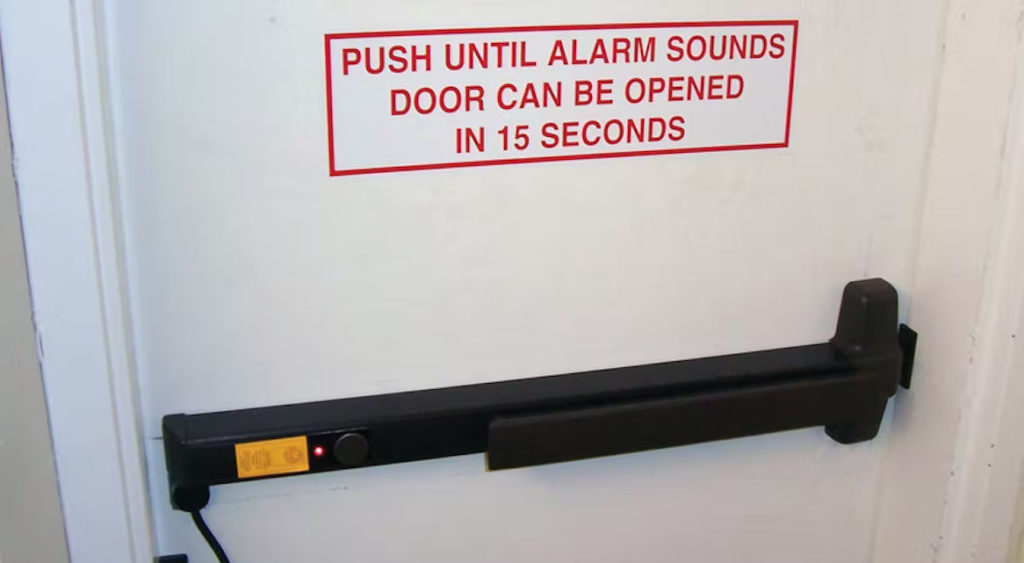 Today’s Quick Question came from an AHJ:
Today’s Quick Question came from an AHJ:
When I am evaluating a door that is equipped with a special locking arrangement, do the model code requirements for normal locking arrangements also apply?
The quick answer: No, (IMO) the section addressing that particular special locking arrangement would apply instead of the requirements for normal locking arrangements.
Read on…
The model codes include specific sections related to applications classified as “special locking arrangements.” The electrified hardware used on these doors may affect egress, so the detailed requirements stated in the applicable sections of the model codes are intended to address the life safety needs of these openings. The following applications are typically considered special locking arrangements:
- Delayed egress locks
- Controlled egress locks in health care facilities
- Electrified locks released by a sensor
- Electrified locks released by a switch in the door-mounted hardware
- Elevator lobby egress doors
- Stairwell reentry
Each of these applications is covered by a specific model code section. Here is an example of how I would interpret the requirements:
The 2021 edition of the International Building Code (IBC) states: 1010.2 Door operations. Except as specifically permitted by this section, egress doors shall be readily openable from the egress side without the use of a key or special knowledge or effort.
The code then describes various requirements such as one motion to unlatch the door for egress, hardware that is operable without tight grasping, pinching, or twisting of the wrist, the allowable mounting height range for the releasing hardware, etc. Subsections of 1010.2 address panic hardware, bolt locks (flush bolts and surface bolts), classroom doors, turnstiles, security grilles, and all of the special locking arrangements, as well as other applications.
For demonstration purposes, let’s say that the door in question has delayed egress panic hardware that releases for egress 15 seconds after an attempt to exit is made (under normal operation). The signage on the door states “Push until alarm sounds, door can be opened in 15 seconds.” But going back to the requirement of 1010.2 (above), doesn’t reading the signage, pushing for 3 seconds to activate the delayed egress timer, and waiting 15 seconds to exit require special knowledge and effort? What if someone can’t read the sign, or doesn’t speak English?
If we look at 1010.2 again, it says that egress doors must be readily openable for egress with a key or special knowledge or effort, except as specifically permitted by this section. Section 1010.2 includes a subsection on delayed egress locks, that allows an alternative means of providing code-compliant egress.
My interpretation of the model codes is that a door with delayed egress panic hardware has to comply with the code section addressing delayed egress locks, and would not have to comply with all of the other requirements listed in IBC-2021 Section 1010.2. According to the delayed egress lock section, the lock would have to release for egress after 15 seconds, or immediately if there is a fire alarm or power failure. The door would require signage, emergency lighting, and an audible alarm. It would have to take 15 pounds of force or less, applied for 3 seconds or less, to begin the timer, and the delayed egress locking system units would have to be listed to UL 294. The use group would have to be one where delayed egress locks are allowed by code, and the building would have to be equipped with an automatic sprinkler system or an approved automatic smoke or heat detection.
If all of the criteria stated in the delayed egress lock section of the code are met, the door is compliant. The code requirements of the other subsections do not have to be met in addition to the section addressing delayed egress locks. [Note: State/local requirements may vary.]
Do you have a different interpretation, or do you agree? Leave a comment!
What’s a normal locking arrangement? You can read more about that here.
You need to login or register to bookmark/favorite this content.


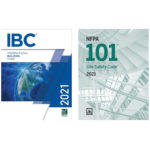

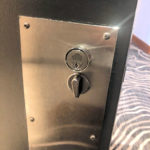
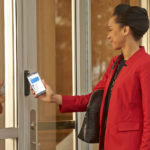


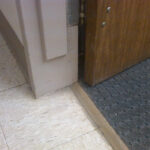
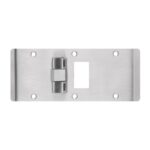

Your answer is correct. It’s known as the explicit hierarchy of the code. The specific overrides the general.
Your example picture device does not comply with code I believe. Delayed egress devices require manual re-arming.
That device has a dummy mortise cylinder installed into it as best I can tell from the photo.
I agree with you. Specific trumps general.